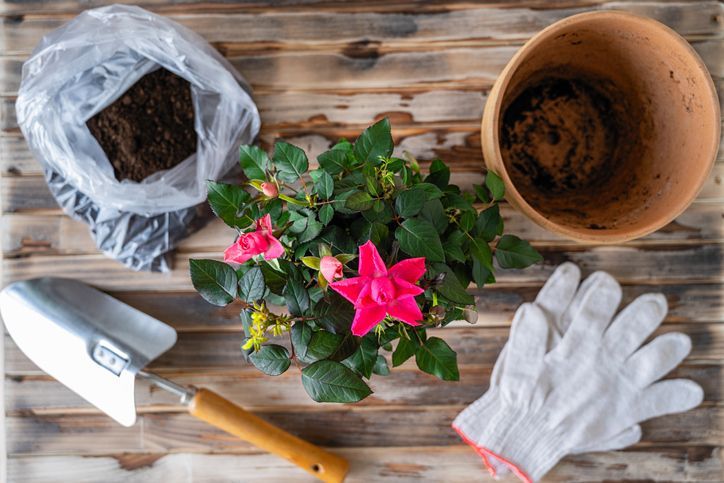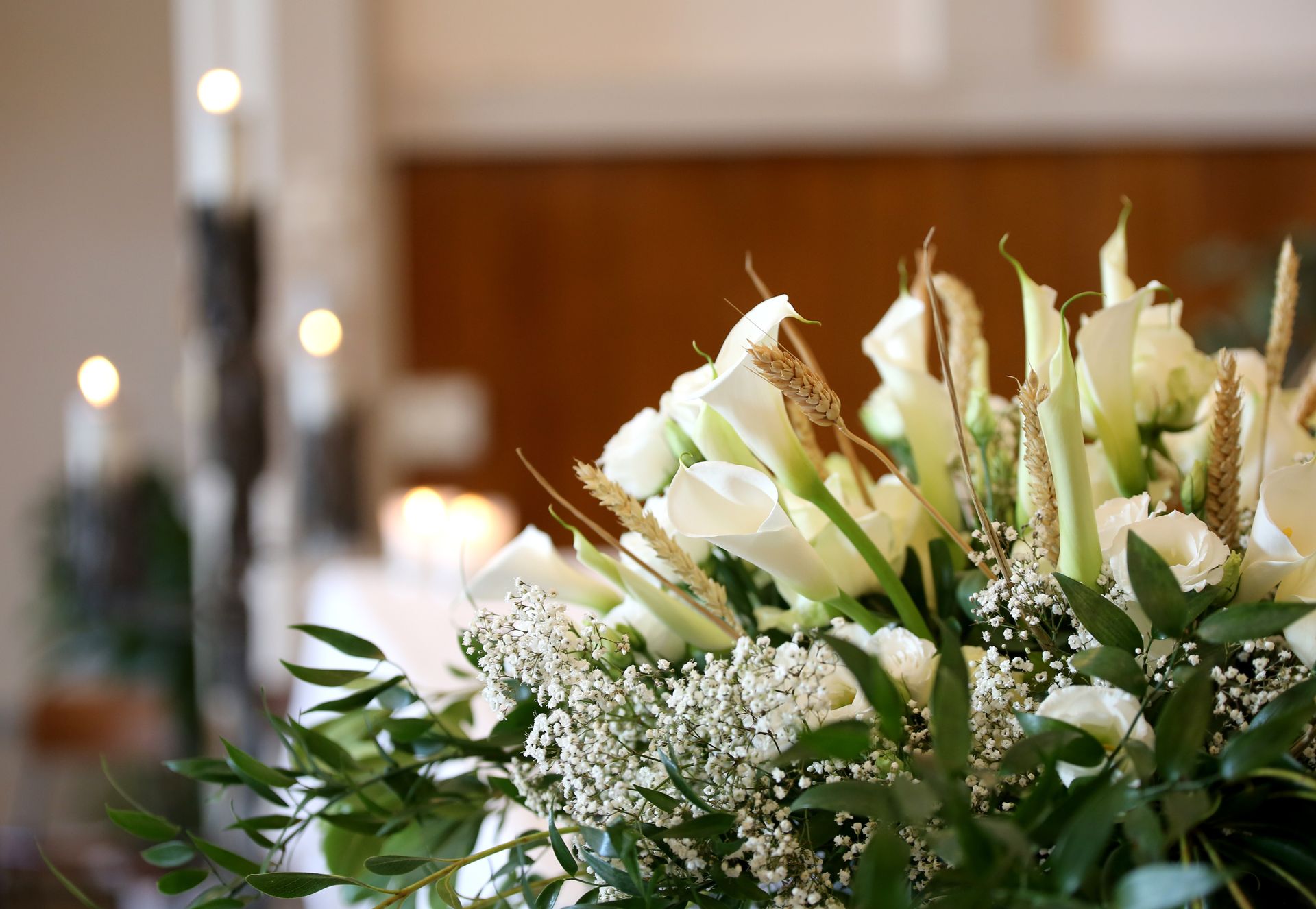Creating a memorial garden that lasts for generations

My Grandmother had a very special knack for gardening. At her funeral, our family shared her passion for turning any old patch of dirt into a beautiful garden. In the photo collages you saw the plants growing over the years alongside family members. Where there was once a toddler standing next to a small plant in one photo there is now a grown man standing next to large leaves and branches of that same plant in the next. Now as we think back over our memories and look on to our own garden, we feel a bond to her and share the same passion for nature.
Every spring my heart swells as I see the tips of green start to sprout at the edge of my yard where I transplanted irises from my grandmother’s garden. These same irises once laid in her mother’s garden as well. It is a connection I have with them that I cherish and look forward to. After the loss of a loved one there can seem like a void is present in your life. Having a way to feel bonded with them can help ease some of that grief.
When I began transplanting flowers from my grandmother’s garden to my own, I started to create a place that I could go to be close to her. I learned a lot about moving plants (mostly through trial and error) and I’m sharing my best tips to help you in your journey of creating a memorial garden that will carry on through generations.
Transplanting bulbs:
The best time to transplant spring bulbs (like tulips, daffodils and irises) is in summer or fall, once the foliage has sufficiently died back. If it is not possible to wait until the bulb is dormant before transplanting, you need to take extreme care to protect the growing parts of the bulb. If the bulbs are clumped together, you will need to transplant the entire clump together. The roots of the bulbs will be entwined; trying to separate them will damage the roots and kill the bulbs.
Transplanting bushes and shrubs:
Give the plant a good trim by cutting off about 1/3 of the plant foliage. This way your transplanted bush or tree can focus on re-growing the root system. It is very important to dig deep and wide. The more roots you get, the more successful the transplant, with less transplant shock. Deeply water regularly. Keep the soil moist, not wet for 3-4 weeks. This helps roots to re-establish themselves.
Transplanting perennial flowers:
The rule of thumb for deciding which perennials (plants that come back year after year) to transplant or divide is based on bloom time. Late summer and fall bloomers are suited for moving in the spring while spring and early summer flowering perennials can be transplanted in fall.
Gardening has helped me in my grieving in several ways. I found peace of mind putting my hands in the soil, I was burying my worries and sadness as I shoveled. In tending to the plants, I was tending to my grief.
“To plant a garden is to believe in tomorrow” – Aubrey Hepburn

July 24, 2025
Attending a funeral or memorial service can stir up many emotions, and for some, one of the first questions that comes to mind is: What should I wear? While traditions around funeral attire have evolved, dressing appropriately remains a way to show respect—for the person who has passed and for their loved ones. Whether the service is formal, casual, religious, or a celebration of life, here are a few thoughtful guidelines to help you choose what to wear. 1. Stick to Neutral, Conservative Colors Black is the traditional color of mourning in many cultures, but it's not your only option. Other respectful colors include navy, gray, deep green, brown, and muted tones. Avoid bright colors, loud patterns, or anything that draws unnecessary attention unless the family has requested otherwise. Tip: Some services may invite guests to wear the deceased’s favorite color or dress casually—check the obituary or invitation for guidance. 2. Dress Modestly and Neatly Funeral services are somber occasions, so choose clothing that is clean, pressed, and conservative: For women, options include a modest dress, blouse with slacks, or a skirt paired with a cardigan or blazer. For men, a dress shirt with slacks, a suit, or a sport coat with a tie is appropriate. 3. Footwear Matters, Too Choose closed-toe shoes that are comfortable, especially if you'll be standing or walking at a graveside service. Simple dress shoes, loafers, or flats work well. Avoid athletic sneakers or flip-flops unless the service is explicitly casual or outdoors. 4. Consider the Location and Weather The setting of the service can influence your outfit: For outdoor or graveside services, wear weather-appropriate clothing and shoes that can handle grass or gravel. Bring an umbrella or coat if needed. Dark outerwear is always a safe choice. In a place of worship, modest attire is often expected regardless of the season. 5. Keep Accessories Simple This is not the time for flashy jewelry or bold accessories. Choose understated items that won’t distract from the purpose of the gathering. 6. What About Children? Children should also be dressed neatly and conservatively. Simple outfits in neutral colors are best. If unsure, dress them as if attending a formal family event or church service. 7. When in Doubt, Dress Up a Bit It’s always better to be slightly overdressed than too casual at a funeral. If you’re unsure about the dress code, err on the side of formality. A respectful appearance helps convey sympathy and support. What you wear to a funeral doesn’t need to be fancy or expensive—but it should reflect care, humility, and consideration. Remember: your presence is what matters most

July 14, 2025
Planning a funeral or cremation—whether for a loved one or preplanning for yourself—can feel overwhelming. There are many decisions to make, all while navigating the emotions that come with loss. But with a little preparation and guidance, the process can be meaningful, healing, and manageable. Whether you're planning ahead or handling arrangements after a loss, this guide walks you through the key steps of planning a funeral or cremation service. 1. Decide Between Burial and Cremation One of the first decisions to make is whether the individual will be buried or cremated. This choice often depends on personal, cultural, or religious preferences. Burial typically involves a casket, a graveside service, and a cemetery plot. Cremation may still include a funeral or memorial service and allows for more flexible options such as scattering, keeping an urn, or burying cremated remains. Some families choose direct cremation (without a service) or direct burial and hold a memorial at a later time. 2. Decide on the Type of Service There are many ways to honor a life, including: Traditional funeral service (usually with the body present) Memorial service (typically after cremation or burial) Celebration of life (a more personalized, informal event) Services can take place at the funeral home, a place of worship or outdoors. Choose what best reflects the person’s life and what brings comfort to those attending. 3. Select the Details You’ll want to personalize the service with details such as: Obituary and newspaper or online notices Casket or urn selection Music, readings, or spiritual elements Photos, videos, or displays of personal items Flowers or charitable donation options Who will speak, perform, or participate Many families also choose to include military honors, religious traditions, or cultural customs. 4. Consider Final Resting Place Options For burials: Choose a cemetery and purchase a plot if one isn’t already owned Decide on a headstone or grave marker For cremation: Decide whether ashes will be kept, scattered, buried, or placed in a niche Some families divide ashes among keepsake urns or jewelry 5. Handle Legal and Practical Matters Don’t forget the necessary paperwork: Obtain a death certificate (you may need multiple copies) Notify Social Security and financial institutions Handle wills, trusts, and estate matters If applicable, coordinate with veterans’ services or insurance providers Funeral directors can help guide you through most of this, but having documents organized in advance can ease the burden. 6. Consider Preplanning Preplanning your own arrangements relieves your loved ones of decision-making during an emotional time. You can: Specify burial or cremation preferences Choose the type of service and location Prepay or set aside funds Record personal touches you’d like included Preplanning ensures your wishes are followed—and it brings peace of mind to everyone involved. While planning a funeral or cremation is never easy, it is an opportunity to reflect, remember, and celebrate a life. Whether you’re planning for the future or coping with a loss today, take each step at your own pace, and don’t hesitate to reach out to professionals or trusted loved ones for support.




